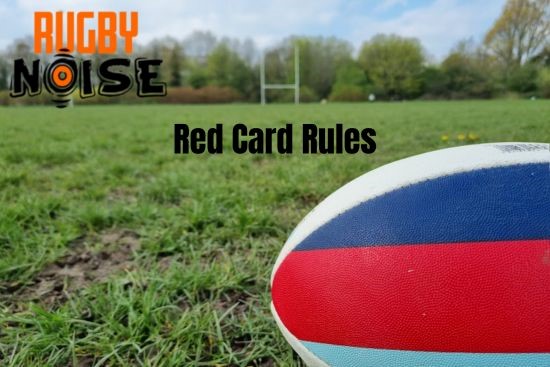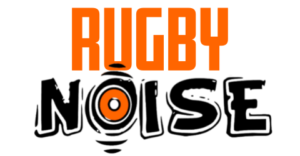Discipline in rugby is very important. If a player is not disciplined, then they can be sent off with a red card. So how do red cards work in the sport?
How do red cards work in rugby? When a player receives a red card in rugby, they are not allowed to participate in the game again, with their team also not being allowed to replace the player who has received a red card. This is the same as a Red Card in football.

Understanding how red cards work in rugby is fairly simple, with red cards working very similarly to football. If a player receives a red card in rugby, they are not allowed to play any further part in the game. They must leave the field and are not allowed to return at any point in the game or be replaced by a substitute.
The team is not allowed to replace the player who has received the red card, as this would negate the punishment of receiving a red card. It means that the team that receives the red card has to play the rest of the game with one fewer player than their opposition.
This is not the only consequence of getting a red card in rugby. Quite often a red card will also bring some form of ban. The length of the ban depends on the incident itself, any mitigation as well as the previous discipline record of the player involved.
What are bunkers, yellow cards and orange cards in Rugby?
There have been a few new rules which add to the complexity of a red card in international rugby over the last few years. All aimed at streamlining play on the field and keeping the game moving. In international Rugby, red cards are now usually given out by the bunker, not the on-field referee.
The on-field referee will very often give the player a yellow card if it meets the threshold for a yellow. Unlike football, this leads to a 10 minute trip to the “sin-bin” where the carded players team will have to carry out a man down. Then, the bunker will have eight minutes to review the incident and determine whether the yellow card should be upgraded to a red card. If it is upgraded to a red card, then the player will not return to the pitch. This has become known as an “orange card”.
If it is kept yellow then they will return after they have served their 10 minute penalty. This new red card rule is only currently in international rugby, with an on-field review still taking place in club rugby games.
The aim of this change to the rules is to allow the on field referee to make a quick decision and get the game going again. Then the officials in the bunker have the opportunity to review and check video footage and make an informed and accurate decision about the incident. Meaning that a game altering red card decision will have a much higher degree of accuracy while not slowing down the game at all.
How do you get a red card in rugby?
There are quite a few different things you can do to get a red card in rugby. The rules of the game state that you get a red card for clear and obvious foul play, but that is quite a wide-reaching term.
In rugby you can get a red card for a high tackle, shoulder charge, making contact with a player in the air, dangerous play or two yellow cards. That might sound like a lot, but it is really not a huge number of things that can cause a player receiving a red card.
At the moment, the most common way for any player in rugby to pick up a red card is by making contact with the head. This is because world rugby have emphasised player safety around head contact in the last few years. Therefore I have seen more red cards for head contact recently.
This can happen in a tackle, ruck or maul. The tackle is the most common place for head contact to be made. If the tackler makes contact with the opposing player’s head, then a red card is possible. If the referee determines that there is a high degree of danger as well as no mitigation, then the player will likely receive a red card.
A red card is also almost always the case when a shoulder charge occurs during a game. If a player’s shoulder makes contact with the head of an opposing player, then there is almost always a red card given to the player as long as there is a reasonable degree of danger involved.
When there is a shoulder charge, any mitigation is ignored and so a red card is very common. You can also receive a red card for making contact with a player in the air. When an opposing player jumps in the air, you cannot make contact with them until they hit the ground again.
Making contact with the player in the air does not necessarily mean that a red card will be given. But if that contact leads to the player in the air landing on their head or neck, then a red card might be given. It depends on the level of danger that the contact caused, as well as any mitigation that might have been involved in the play.
The least surprising way to get a red card is through an act of violence. Most of the time, red cards will automatically be given out if any player throws a punch, stamps on another player, or attempts an eye gouge. All of these are violent acts which result in red cards in the game of rugby.
Any sort of fighting is not allowed in rugby and will usually result in a red card. If there is a multi-player brawl, then the referee will often send off the players from each team that instigated the fight. This means they don’t have to send multiple players off from both teams and ruin the game.
Similarly, any contact with the referee will usually result in a red card. If you act in a violent manner towards any of the officials then this will result in a red card. Rugby referees are also a lot stricter on players using offensive language aimed at the officials. This can also result in a red card.
Red cards are also always given out if the same player receives two yellow cards in a single game. It does not matter what the two yellow cards are given for, any player who receives two yellow cards in the same game will also receive a red card and will not be allowed to return to the pitch.
